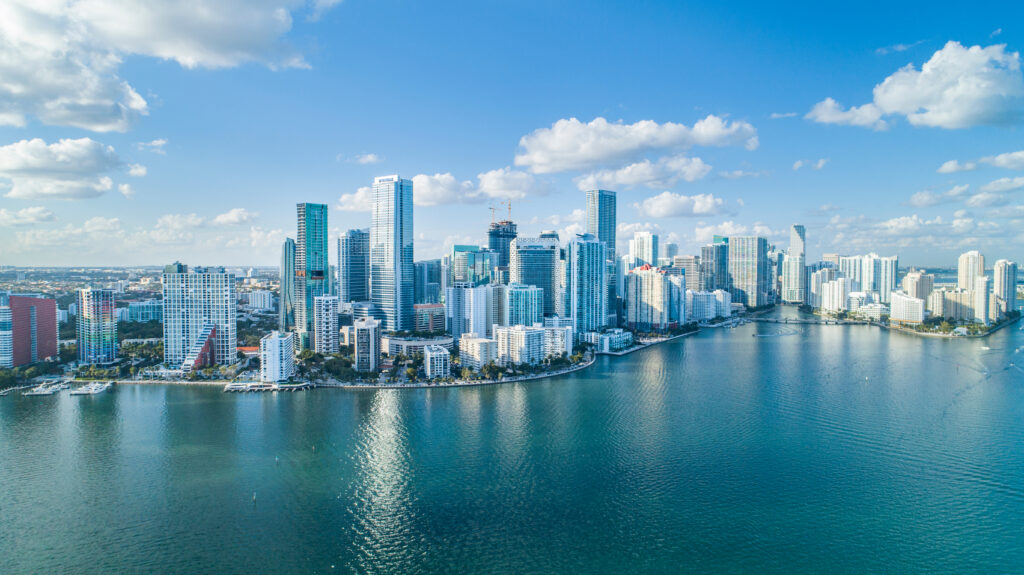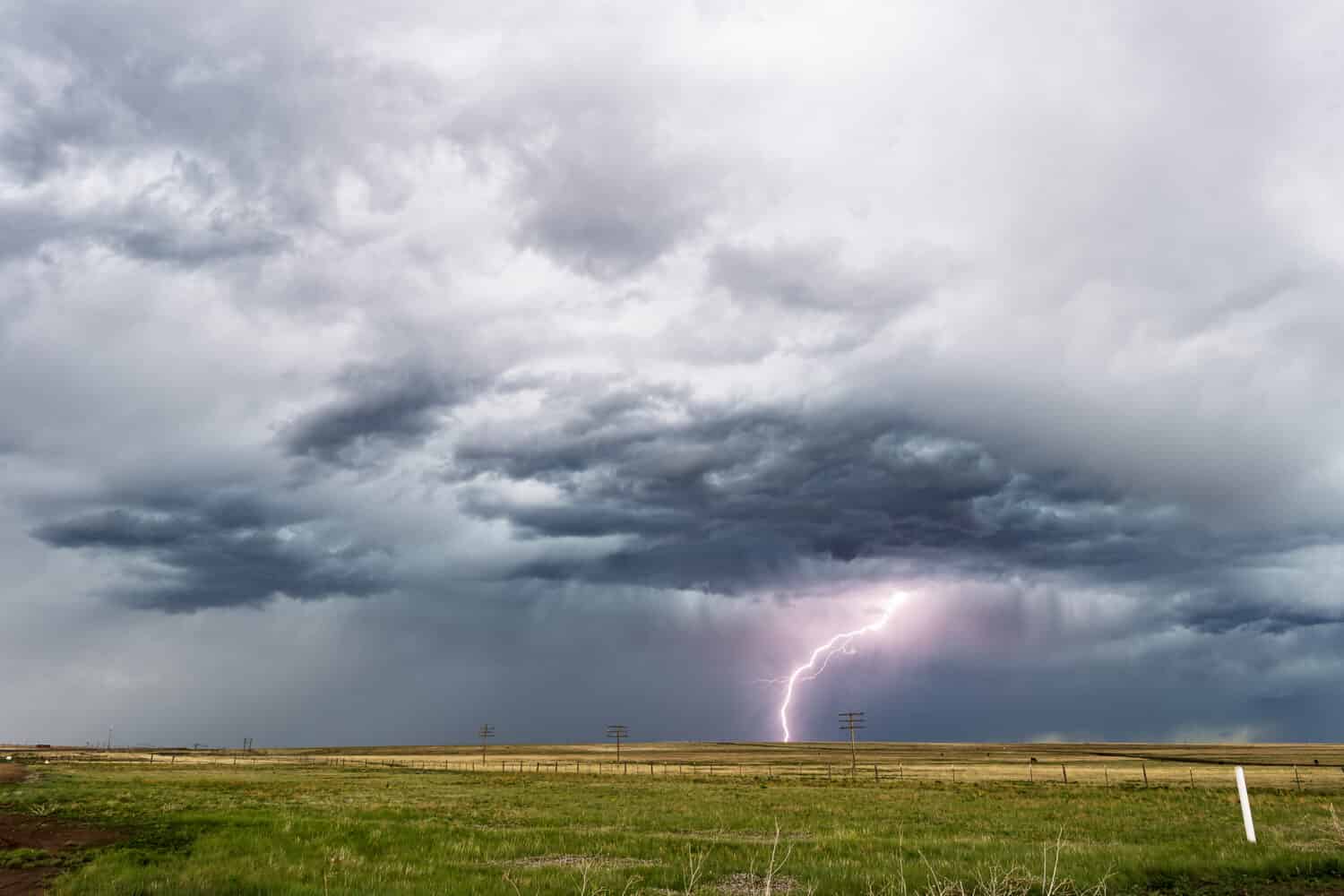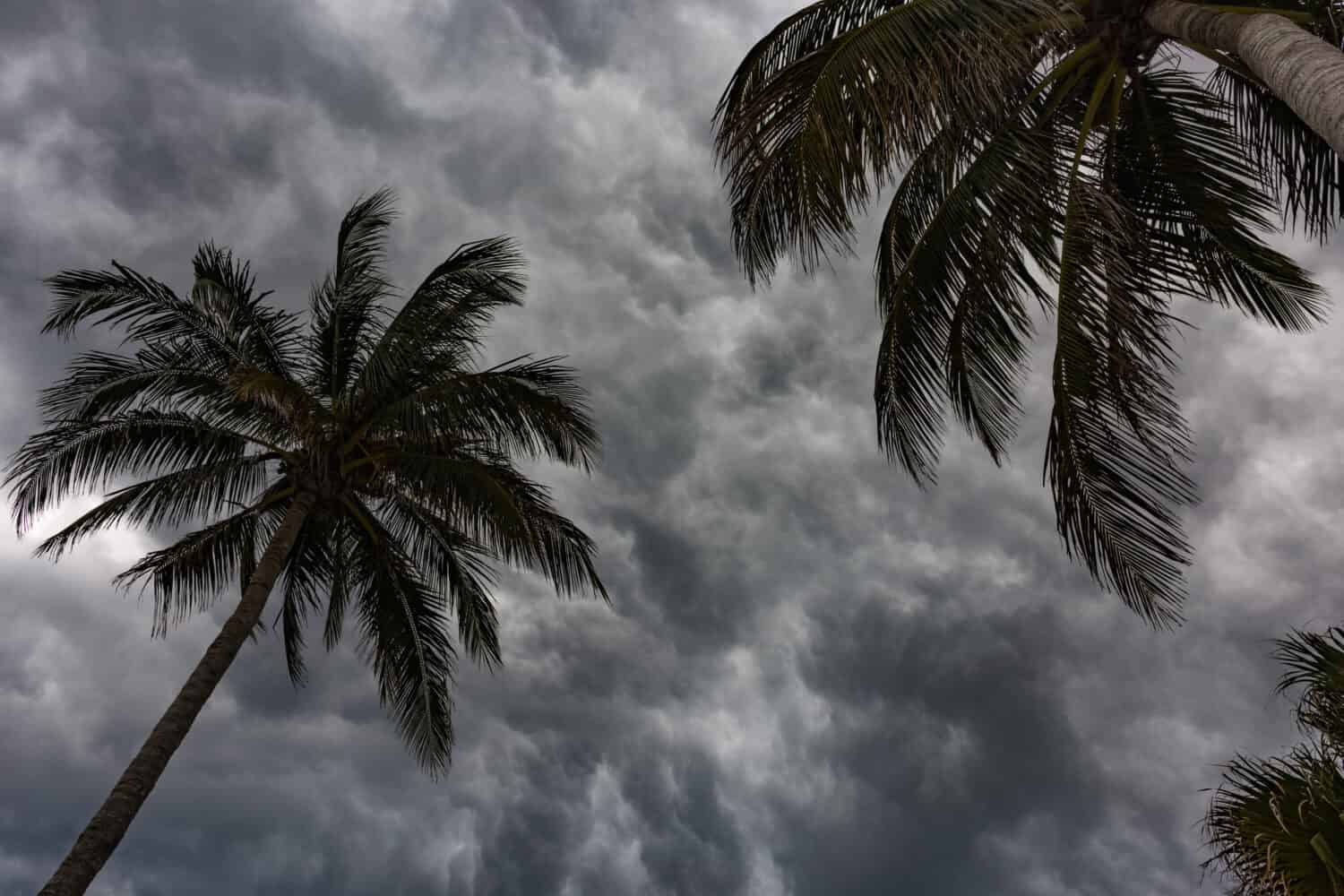Does Florida have a true “rainy season?”
It does! A number of factors determine the rainy season throughout the state, and the timing can differ from region to region. Generally, the rainy season in Florida lasts from mid-May to mid- or late October. Either way, wherever you are in the state, you will see some rain. In fact, Florida downpours are famous for stopping drivers in their tracks. Many inevitably pull over to the shoulder of the road to wait for the deluge to let up. Typically, the state receives barrels of rainfall in a relatively short period of time.
When Is Florida’s Rainy Season?

Miami is one of the first areas of Florida to receive rain each year.
©Demetrius Theune/Shutterstock.com
Usually, South and Central Florida will have slightly different dates for the start of their rainy seasons.
Miami is the kick-off location for Florida’s official rainy season, which usually starts in mid-May. Approximately two weeks later, rain frequency will increase in Tampa and Orlando. After that, it then moves into the northern panhandle region that includes Tallahassee.
According to the National Weather Service, the peak, or stormiest phase of the Florida rainy season, occurs during the first four to six weeks. During that time, there are stronger thunderstorms and potentially damaging winds. Practically 70 percent of Florida’s average rainfall occurs from mid-May to the official end of the rainy season in mid-October. During that five-month period, expect “near-daily scattered showers and thunderstorms,” according to the National Weather Service.
Another factor in the state’s rainy season is the El Niño weather pattern, which occurs every three to five years. Warmer-than-usual waters in the eastern Pacific Ocean trigger El Niño, which ultimately causes more precipitation and intense weather patterns throughout the country, including Florida.
Why Does Florida Get So Much Rain?

Because of Florida’s location, the state receives many storms each year.
©Alexander Lukatskiy/Shutterstock.com
Location, location, location! With the Gulf of Mexico bordering the western part of the state and the Atlantic Ocean to the east, prevailing winds push warm, moist air into the state. When this moist air moves over land, it cools and then rises. That forms clouds, which are basically an accumulation of tiny water droplets.
2023 has been an extra-rainy year for Central Florida, with 4.39 inches of rain drenching Ocala in one day, breaking a record. Meteorologists say that an unusual weather pattern that favors the development of thunderstorms caused that.
What Part of Florida Gets the Most Rain?

Florida is known as the “lightning capital of the U.S.”
©John D Sirlin/Shutterstock.com
The tiny community of Garcon Point takes the prize as being the rainiest locale in Florida. Located on the state’s panhandle and noted for its exceptionally stunning views of the Gulf of Mexico, Garcon Point has an average precipitation of 67.69 inches.
Florida also beats the rest of the country where thunder and lightning are concerned. As those go, the state experiences most of its severe thunderstorms from late May through June. Fort Myers, located on the state’s southwestern coast, is known as the “thunderstorm capital” of the United States. It has a yearly average of 89 such storms! Actually, Florida is home to eight out of the top ten thunderstorm cities in the U.S.
Thunderstorms are born out of three main ingredients: moisture, instability, and motion in the atmosphere. Although thunder and lightning can occur in Florida all year round, the hot, moist summer months are the times of greatest heat and instability in the atmosphere.
In that regard, Florida has another distinction to add to its name, the “lightning capital of the U.S.” Researchers have tallied an average of 1.2 million “cloud-to-ground” lightning strikes in Florida annually. So, it follows that Florida also tops the charts in lightning fatalities. That makes it especially important for residents and visitors to remember the old adage about heading indoors when thunder roars.
By counting the seconds between a flash of lightning and the sound of thunder, you can roughly estimate how far away the lightning is — a mile for every 5 seconds. Lightning strikes aren’t dependent on rain, as lightning often travels up to 10 miles away from a thunderstorm at a rate of up to 270,000 miles per hour.
What Parts of Florida Are the Sunniest?

The Sunshine State has an average of 237 days of sunshine a year
©Alexander Demyanenko/Shutterstock.com
Even though it may rain a lot in Florida, the storms are typically of short duration, meaning that the “Sunshine State” fulfills that promise in terms of the number of days a year of sunshine, which is an average of 237. But even in Florida, some locales are sunnier than others.
Bonita Springs is considered one of the sunniest cities in Florida, with an average of 271 sunny days annually.
What Are the Best Months to Visit Florida?
Looking for cooler temperatures with less rain and thunderstorms? Then plan your visit during the weeks from March through the beginning of May, typically considered to be the best season to visit Florida. That period is also less crowded than the snowbird winter season from December to February, which offers cooler temperatures but comes with a temporary increase in Florida’s population by nearly a million extra visitors.
Thank you for reading! Have some feedback for us? Contact the AZ Animals editorial team.








